Hammam - Turkish Bath (Object 77)
18th century (Ottoman Period), dimensions: Ca. 10m x 17m 12m
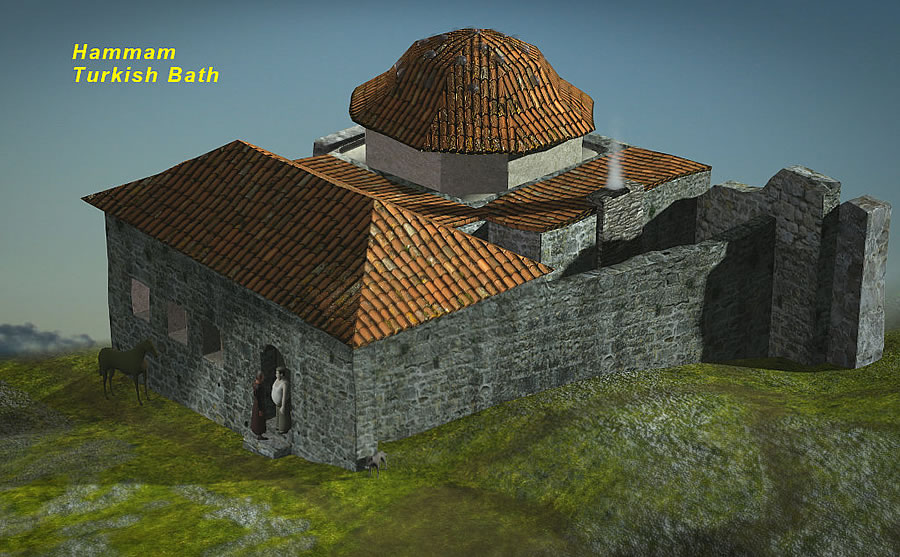


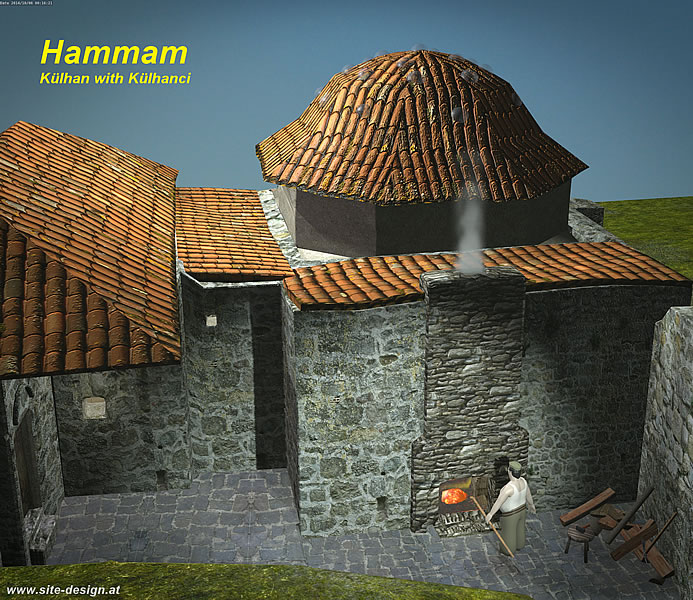
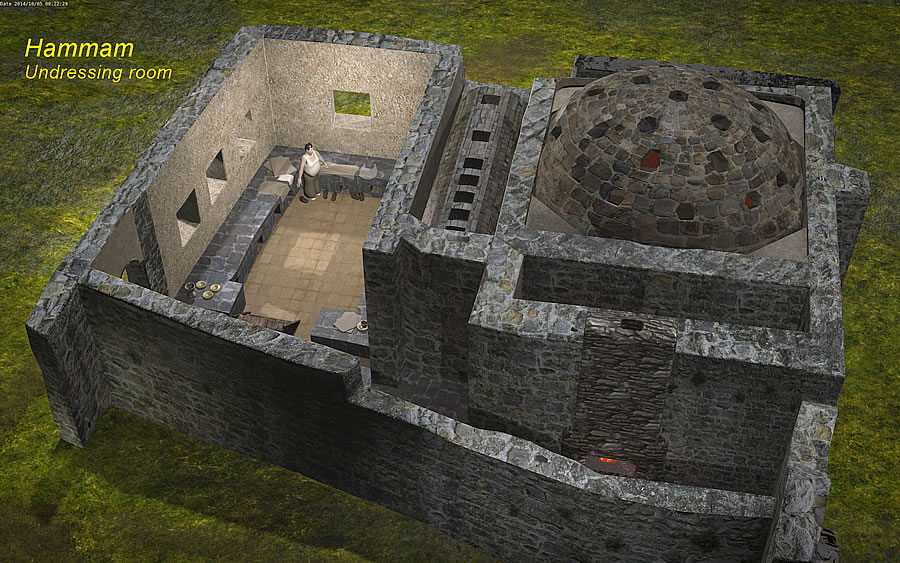
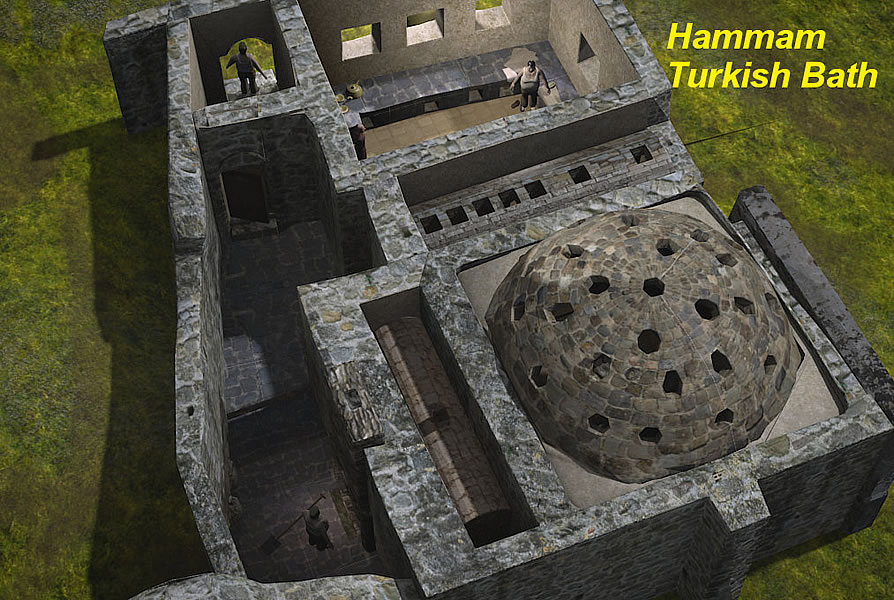
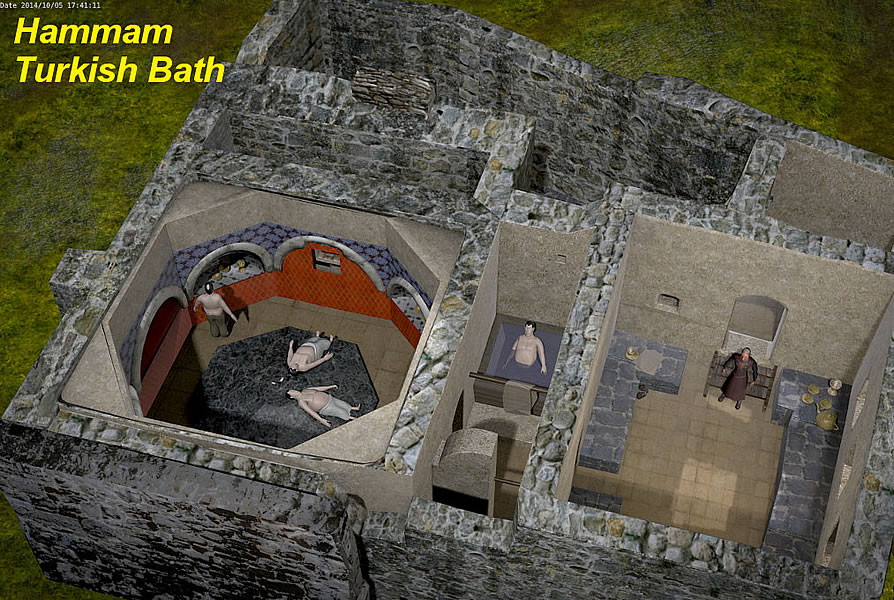
Snapshots of the heating system in principle
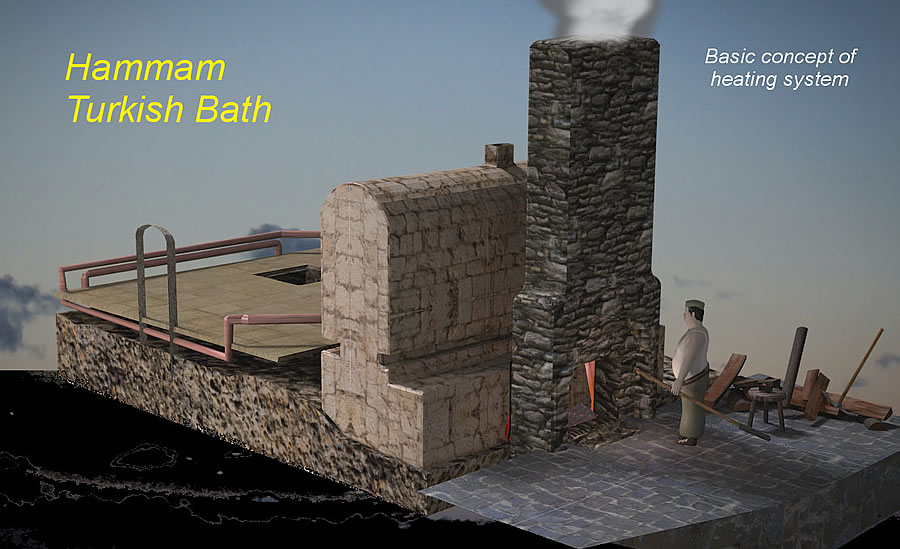
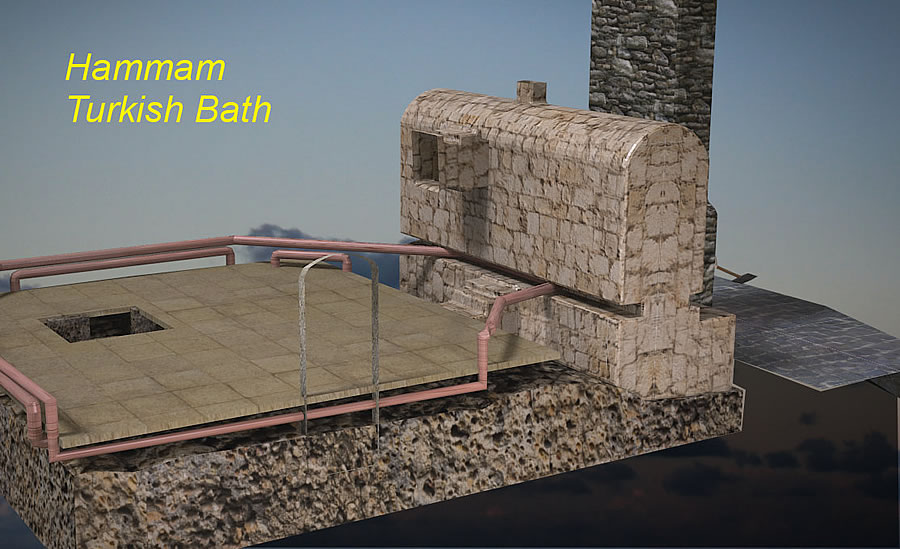
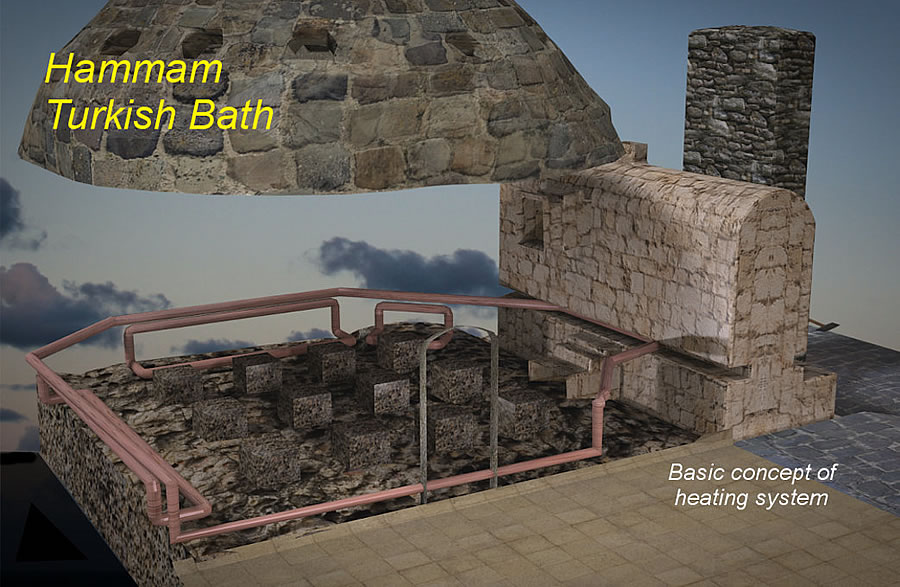
Additional information:
Turkish hamams consist of a certain number of rooms.
Soyunmalık - the undressing room;
Soğukluk- a cold room (literal translation from Turkish) that in winter can be used as a dressing room. Soğukluk is situated between soyunmalık and sıcaklık.
The next section, sıcaklık or ‘inner hamam’ is a hot room of a bath. This section of the bath has a large dome often decorated with small glass windows (so called the
elephant’s eye glass) that create a half-light.
Halvet is a very hot small bathing cell with adjustable steam lids. It is a place where a visitor can bathe in private if desired. No door
partitions this secluded area, therefore a bather hangs a peştemal (a special towel for bathing) over the entry and thus indicate that a halvetis occupied. In halvetone can also find
basins for washing.
Külhan - a space for heating, is a room kept apart from the other sections of a hamam. The külhanhas had a separate entrance
from outside.
The hot place sıcaklık and the dressing place soyunmalık are most pronounced in Turkish
hamams for their special functions. The hot area is used for bathing, massaging and rubbing
the skin with kese, a special rough glove. The “heart” of every sıcaklıkis göbektaşıthat is a
marble stone positioned in the middle of the section, usually octagonal or square in shape. A
bather can lie down and relax on göbektaşı, massage and rubbing of the skin is
also usually done there. The dressing room soyunmalıkis often the largest area in the whole
hamam. Very often one can find a tea preparation place, which makes it an important space for communication and entertainment.
Among some peculiar architectural elements of Turkish baths are so-called ‘elephant’s eyes’, which are approximately 15-20 centimetres diameter windows. They are installed over a central dome to illuminate the inside of the hamam. ‘Elephant’s eyes’ can catch the light from all directions due to its special shape, which is bell-shaped and made of a thick glass. As Yılmazkaya noted round or star-shaped windows “can catch whatever light is outside no matter what the hour of the day and send it filtering in a very mysterious and beautiful fashion over the bathers perspiring on the platform below.”
Source: Smolijaninovaitė, Kristina (2007): A Study on Historic Hamams in Istanbul. Changing Aspects of Cultural Use and Architecture. Master Thesis for World Heritage Studies. University of Cottbus, page 22-23. [modificated]
Plans:
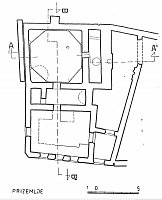
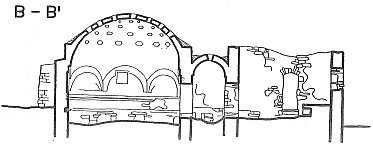
Source: Stari Bar, BOŠKOVIĆ Đurđe, Beograd: Savezni institut za zaštitu spomenika kulture, 1962, page 51.
top ↑
top ↑
rendered September 2014